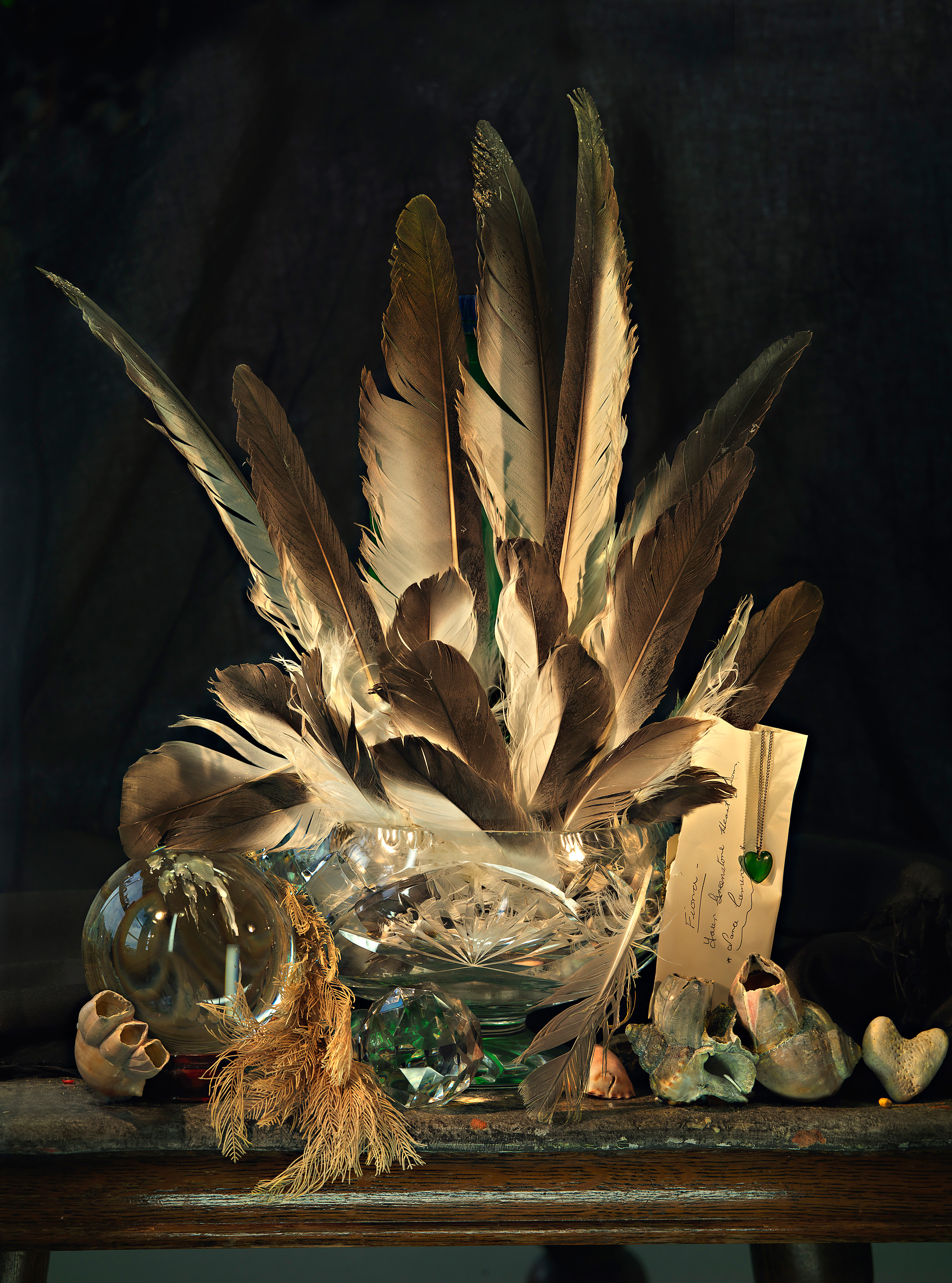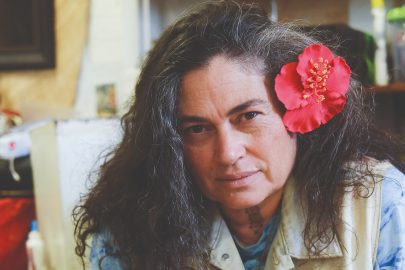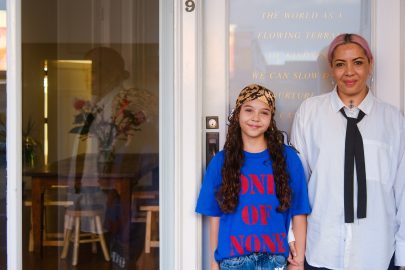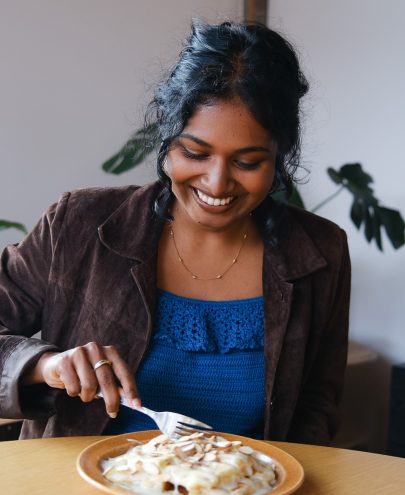Mar 1, 2016 Art
Ambiguity and ambivalence are ever-present in Fiona Pardington’s photography, which is surveyed in a deftly curated exhibition covering 30 years of work.
We reveal a lot of ourselves in admitting to the ways we want to fuck and the things we want to possess. These admissions are also when we’re at our most vulnerable — not just to the prospect of fulfilling those desires but having them used against us, translated into a kind of violence.
This is the ambivalent, precarious world inside Fiona Pardington’s photographs. This month, an excellent survey of her work, A Beautiful Hesitation, travels to the Auckland Art Gallery from City Gallery Wellington.
Made up of more than 100 images, the exhibition includes now-deceased lovers; sad-looking, half-naked London girls from the 50s and 60s; poxed and freakish bodies from medical journals; heitiki; stuffed huia; magic mushrooms; and the cast heads of everyone from dead children to Pardington’s own Ngai Tahu ancestors.
On the face of things, it seems to jump around wildly. But some extremely deft curating and (occasionally) excellent new writing in the book published to coincide with the show reveal that Pardington’s two dominant themes — sex, and the things we collect in museums — are actually opposite sides of the same coin.
Both, in Pardington’s universe, are about holding things down or pinning them up, and about finding meaning, and our own reflections, in that act.
“It’s not a judgment, either,” she tells me. “And I think that disturbs a lot of people, because they’re used to being told whether what they’re looking at is good or bad … I’m not going to tell people that; they can work it out for themselves. They don’t need me standing behind them like a schoolmistress and hitting them on the hand with a ruler if they get it wrong.”
Pardington lives on the road to Bethells Beach. When I send her a text to let her know I’m on my way, she fires one back: “I’ll warn the chickens,” it says. To describe her as an animal lover is an understatement. When I arrive, there are creatures everywhere: the aforementioned chooks; an over-familiar pup called Freud, who takes a liking to my Corolla; and parrots.
It’s not until part-way through the interview that I finally place the male voice I’ve been hearing: it’s one of her birds, trying to participate in our conversation.
It’s a remarkable, solitary, Dolittle-ish set-up. Pardington is a remarkable presence, too, with long hair and tinted glasses, arms enveloped in beautiful tattoos, and an intense manner that flips between nervousness and a ferocious intelligence. This is mixed with a sensitivity to the world she describes as almost socially crippling.
“I suppose I’m a very empathetic person. All sorts of things I find really difficult to cope with. Even reading bad poetry hurts me,” she says, laughing. “I can look at any photograph or object or situation and feel it very deeply …. That’s why I live away from people, too; I spend a lot of time by myself. It’s to keep away from that.”

This empathy is the connecting thread in all her work. Whether she’s photographing a naked body, or a dead huia, or the cast of a deformed, syphilitic head, there’s always a blurred sense of who’s in control of the transaction —he subject, the photographer, or us as viewers.
Pardington throws Henri Cartier-Bresson’s idea of the “decisive moment” into reverse, replacing it with a kind of floating, human indecision.
Though she revels in this ambiguity, she’s also governed by a deep sense of personal ethics. “There are some things I won’t photograph, and I don’t care if they’d be great photographs — because it’s just not good.” She’s particularly scathing, for example, of Jono Rotman’s images of Mongrel Mob members, which gained so much media attention when they were first shown at Gow Langsford in 2014.
“It victimises the victims all over again,” she says. “All those women that have been bashed and raped, all the girls that have been sexually abused, addicted to drugs … That’s what you’re looking at when you look at those photographs.”
The contrast between Rotman’s “head shots” and Pardington’s equivalents — the dozens of 18th- and 19th-century life casts she found in French museums — couldn’t be more stark.
Rotman’s are sensationalist; Pardington’s are about connection — about a deep desire to know the people whose faces were frozen in plaster or wax forever, for the sake of pseudo-scientific phrenology: the indigenous (including her ancestors), the mentally ill, executed criminals, even early feminists.
“It was a time when people were busy trying to sort out the body from the mind,” she explains, when I ask her why she’s so preoccupied with the casts.
“Casting was also used a bit like Woman’s Weekly: beautiful girls who suicided because they were pregnant, or murderers, or people who’d been guillotined. People would stand in a line miles long to see casts of the kings and queens of Europe.
She has consistently walked the line between fantasy, art and violence: between describing physical pleasure and pain and having the photographs themselves — through their sheer beauty, scale and lushness — act it out.
“I’d love to go back and photograph more, do more research into the unusual people they executed just because they didn’t know what to do with them. [I want to] open up the stories about these individuals, because I care about who they are.”
At the heart of A Beautiful Hesitation is an image that, for me, provides vital insight into Pardington’s art and thinking. It’s of a cast of the skull of the Marquis de Sade — a man Pardington describes as “one of the great minds of anybody’s time”.
Sade’s work is the shadow to Descartes’ “cogito ergo sum”, a visceral, violent, sexual investigation of the relationship between mind and body. What better way to embody that than with a photograph of the only known trace of the man’s head?
It also acts as a powerful statement about Pardington’s entire body of work; like Sade, she has consistently walked the line between fantasy, art and violence: between describing physical pleasure and pain and having the photographs themselves — through their sheer beauty, scale and lushness — act it out.
“My work doesn’t pivot on some moral ground,” she says. “It’s all about the grey areas. You don’t need an artist to tell you what’s right or wrong. There’s too much of that in the world.”
A Beautiful Hesitation, Auckland Art Gallery, March 5 to June 19.
Main image: Fiona Pardington at home with one of her chooks, photographed exclusively for Metro by Meek Zuiderwyk.





